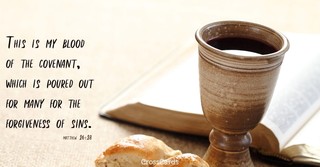- Recent Translations
- All Translations
Matthew 26:59
Share
Settings
Matthew 26:59 Meaning and Commentary
Now the chief priests and elders, and all the counsel
Or sanhedrim, which consisted, as the Jewish writers say F21, of priests, Levites, and Israelites, of both ecclesiastics and laics; the ecclesiastics were the priests and Levites, and the laics the Israelites, or elders of the people; for if priests and Levites could not be found, a sanhedrim might consist of those only; and so those words in ( Deuteronomy 21:2 ) , "thy elders", are thus interpreted F23, (lwdgh Nyd tyb hz) , this is the great sanhedrim; and though a king of Israel might not sit in the sanhedrim, yet an high priest might, if he was a man of wisdom F24, and it seems as if Caiaphas was now at the head of this council, by its being assembled at his palace; which though it was not the usual place where they met, yet might be chose at this time for greater secrecy. Now these thus assembled together,
sought false witness against Jesus, to put him to death;
they first take him up, and then seek out for witnesses against him; being determined, right or wrong, to put him to death, if possible; and false witnesses too, even those whose business it was, to examine and detect false witnesses, and to inflict the same punishment upon them, which they by their false testimony intended to have brought on another, ( Deuteronomy 19:18 Deuteronomy 19:19 ) . And besides, it was in the night, when it was forbid by their canons to begin the trial of capital causes, or to receive and admit of witnesses F25. Indeed the Syriac and Persic versions read, only witnesses, or witness, and leave out the word "false"; perhaps imagining, that men could never be so wicked, to seek out for false witnesses: but this need not be wondered at, when these men were bent upon the death of Christ at any rate; and were aware that nothing true could be objected to him, that would legally take away his life; and besides, their manner of procedure in judgment against a false prophet, a deceiver, and one that enticed to idolatry, and such an one they would have Jesus to be, was quite different from what they took with other persons: their canon runs thus F26:
``the judgment of a deceiver, is not as the rest of capital judgments; his witnesses are hid; and he has no need, or ought not to have any premonition, or warning, as the rest of those that are put to death; and if he goes out of the sanhedrim acquitted, and one says I can prove the charge against him, they turn him back; but if he goes out condemned, and one says I can prove him innocent the do not return him.''So in the Misna F1 it is said,
``of all that are condemned to death in the law, none have their witnesses hidden but this (the deceiver, or one that entices to idolatry)--and they hide his witnesses behind a wall, or hedge; and he (whom he endeavoured to seduce) says to him, say what thou hast said to me privately; and if he repeats it to him, he must say, how shall we leave our God that is in heaven, and go and serve stocks and stones! if he repents, it is well; but if he should say, so we are bound to do, and so it becomes us, they that stand behind the wall, or hedge, shall carry him to the sanhedrim and stone him.''In the Gemara it is thus expressed F2,
``they light up a lamp in the innermost house, and set the witnesses in the outermost house, so that they can see him and hear his voice, and he cannot see them.''And then follows what is said before, to which is added, "so they did to Ben Stada"; by whom they mean Jesus of Nazareth. Moreover, this need not seem strange, that they took such a course with Christ, when in the case of Stephen, they suborned and set up false witnesses against him. The sanhedrim cannot be thought to do this in person, but they sent out their officers to seek for such men, as could or would produce anything against him, and no doubt promised them an handsome reward.
F21 Maimon. Hilch. Sanhedrin, c. 2. sect. 1, 2. Abarbinel in Tora, fol. 366. 2.
F23 T. Hieros. Sota, fol. 23. 3.
F24 Maimon. ib. sect. 4.
F25 Maimon. ib. c. 3. sect. 3, 4.
F26 lb. c. 11. sect. 5.
F1 Sanhedrin, c. 7. sect. 10.
F2 T. Bab. Sanhedrin, fol. 67. 1.
Matthew 26:59 In-Context
Cross References 1
-
1.
Matthew 5:22
Footnotes 1
- [a] Or "Sanhedrin"
